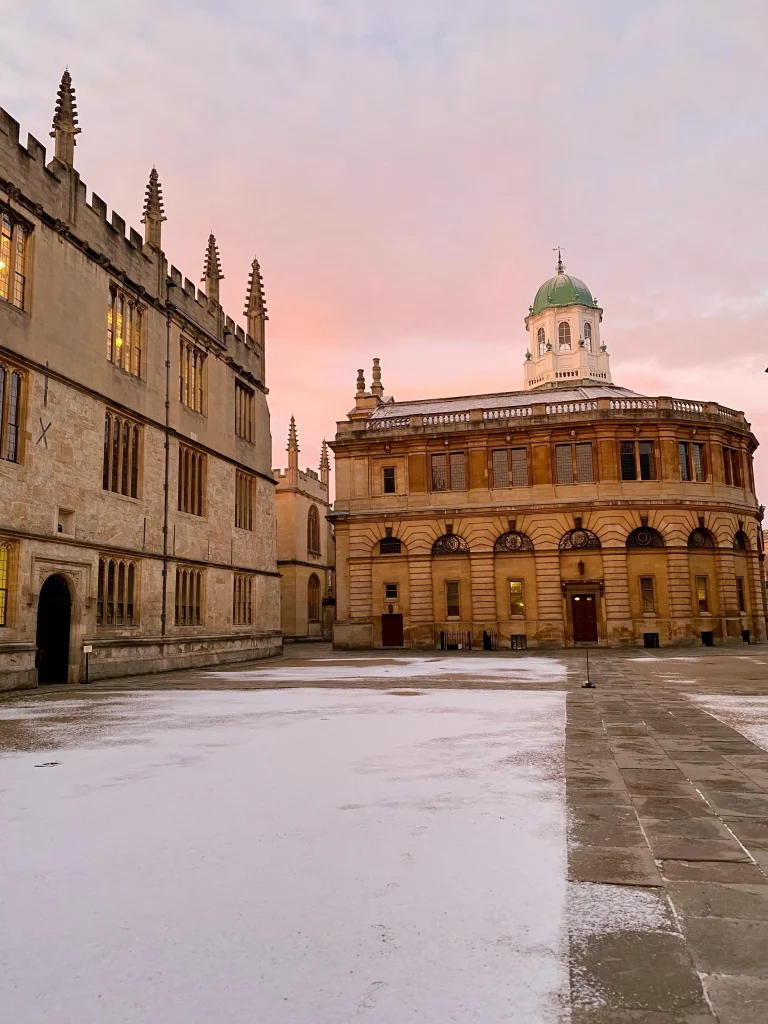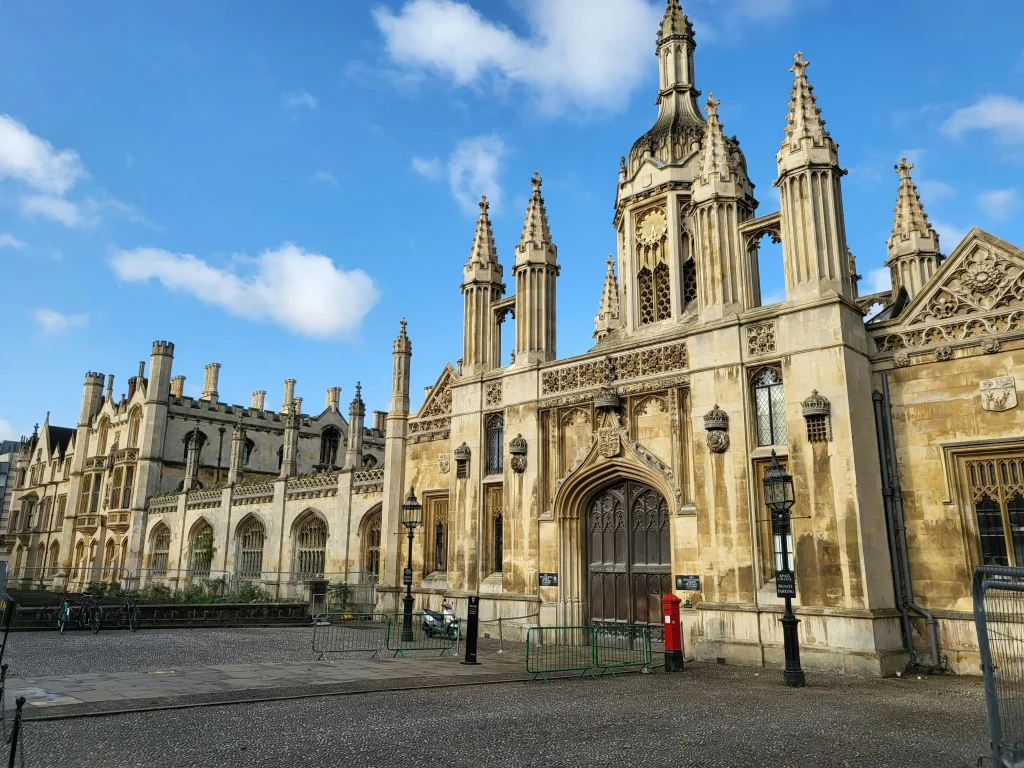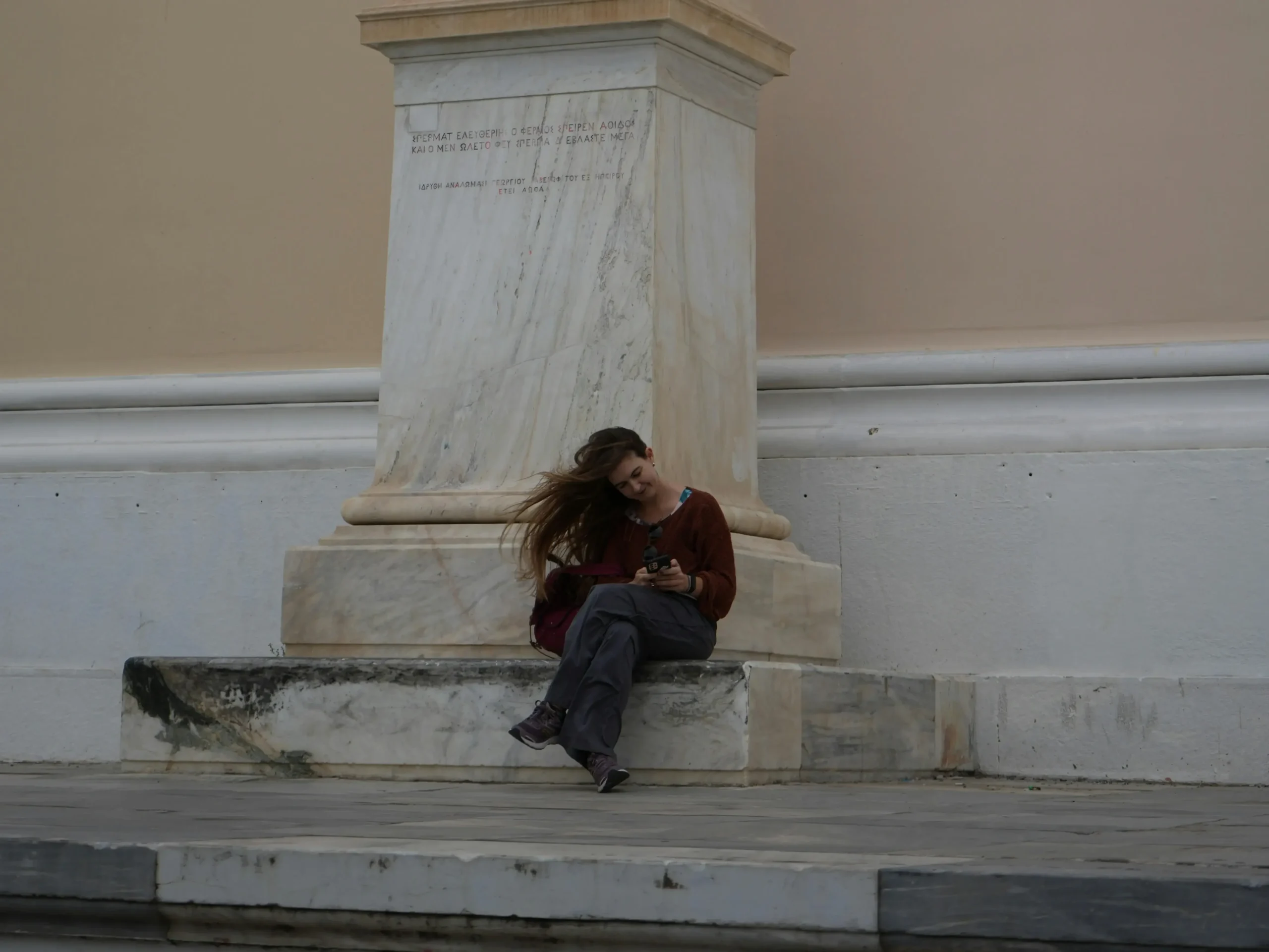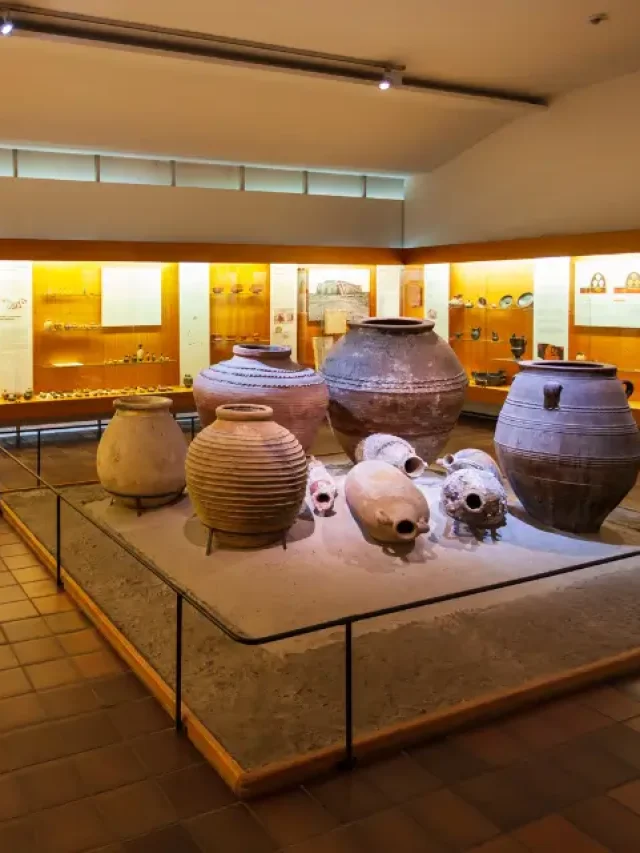Have you ever wondered where the very first university was founded? Imagine a time when there were no classrooms, no exams, and no formal degrees—just curious minds gathering to explore philosophy, science, and medicine. That’s how the journey of higher education began!
The world’s first universities weren’t just about getting a degree; they were hubs of knowledge and innovation. Some of these ancient institutions are still standing, welcoming students from across the globe. In this article, we’ll take you back in time to discover the first university in the world and the top 10 oldest universities that continue to inspire learning even today.
Table of contents
- Top 10 First Universities in the World
- University of al-Qarawiyyin: First University in the World
- Al-Azhar University
- University of Bologna
- University of Oxford
- University of Paris (Sorbonne)
- University of Cambridge
- University of Salamanca
- University of Padua
- University of Naples Federico II
- University of Coimbra
- How These Universities Shaped Modern Education?
- The Legacy of Ancient Universities Today
- FAQs
Top 10 First Universities in the World
Universities have been the cornerstone of higher education for centuries, shaping civilizations and advancing knowledge. The first universities in the world were established as centres of learning, primarily focusing on subjects like philosophy, law, medicine, and theology.
These institutions laid the foundation for modern education and continue to influence academic systems worldwide. Here’s a look at the top 10 first universities in the world, their history, and key highlights.
| University | Founded | Location | Key Highlights |
| University of al-Qarawiyyin | 859 AD | Morocco | Oldest degree-granting university, still operational |
| Al-Azhar University | 970 AD | Egypt | Oldest Islamic university |
| University of Bologna | 1088 AD | Italy | First modern university in Europe |
| University of Oxford | 1096 AD | UK | One of the most prestigious universities |
| University of Paris (Sorbonne) | 1150 AD | France | Early center for theology and philosophy |
| University of Cambridge | 1209 AD | UK | One of the top universities globally |
| University of Salamanca | 1218 AD | Spain | First university in Spain |
| University of Padua | 1222 AD | Italy | Known for scientific research |
| University of Naples Federico II | 1224 AD | Italy | First state-supported university |
| University of Coimbra | 1290 AD | Portugal | One of the oldest in Europe |
Let’s learn about these universities in detail.
University of al-Qarawiyyin: First University in the World

The University of al-Qarawiyyin, founded in 859 AD in Morocco, is widely recognized as the first university in the world that granted degrees. Established by Fatima al-Fihri, it became a centre for advanced learning in mathematics, astronomy, medicine, and theology. Even today, the university continues to operate, making it the oldest existing educational institution.
University of al-Qarawiyyin Highlights
| Established in: | 859 AD |
| Known as: | First University in the World |
| Also Called as: | al-Qarawiyyin |
| Total Enrollment: | Around 8,000 |
| Campus Size: | Located within the historic Fez Medina |
| Oldest Course: | Islamic Studies |
| Number of Colleges: | Integrated into the modern Moroccan university system |
| Study for Free: | No (Scholarships available) |
Al-Azhar University
Al-Azhar University was founded in 970 AD in Cairo, Egypt. It is one of the oldest universities in the world and a major centre of Islamic learning. Originally established as a madrasa, it later evolved into a full-fledged university offering degrees in theology, law, and science. Today, it is regarded as the most prestigious institution for Islamic studies and continues to play a vital role in religious and modern education.
Al-Azhar University Highlights
| Established in: | 970 AD |
| Known as: | One of the First Universities in the World |
| Also Called as: | Al-Azhar |
| Total Enrollment: | Over 200,000 |
| Campus Size: | Multiple campuses across Egypt |
| Oldest Course: | Islamic Theology |
| Number of Colleges: | 80+ faculties |
| Study for Free: | Partially (Grants for Islamic Studies) |
Also Read:
- Top 10 Cheapest Universities in the World in 2025
- World’s Most Expensive Universities for Students in 2025
University of Bologna
The University of Bologna was founded in 1088 AD in Italy. This university is recognized as the first modern university in Europe. It introduced structured degree programs and faculties, setting the foundation for higher education worldwide. The term “university” was first used here. It remains one of the first universities in the world for law, humanities, and sciences.
The University of Bologna Highlights
| Established in: | 1088 AD |
| Known as: | First Modern University in the World |
| Also Called as: | UNIBO |
| Total Enrollment: | Around 90,000 |
| Campus Size: | Located in Bologna, Italy |
| Oldest Course: | Law |
| Number of Colleges: | 11 schools |
| Study for Free: | No (Financial aid available) |
University of Oxford

The University of Oxford, established in 1096 AD in the UK, is one of the first universities in the world and the oldest in England. It has produced some of the most influential figures in history, including world leaders, scientists, and Nobel laureates. With 39 colleges, Oxford offers a wide range of courses and is consistently ranked among the best universities globally.
Oxford University Highlights
| Established in: | 1096 AD |
| Known as: | First University in England |
| Also Called as: | Oxford |
| Total Enrollment: | Around 24,000 |
| Campus Size: | 32 sq km |
| Oldest Course: | Theology |
| Number of Colleges: | 39 |
| Study for Free: | No (Highly competitive scholarships available) |
University of Paris (Sorbonne)
The University of Paris (Sorbonne) was founded in 1150 AD in France and became one of the leading universities in Europe for philosophy, law, and theology. It played a major role in shaping the structure of medieval universities. Today, the Sorbonne remains a prestigious institution for the arts and humanities.
The University of Paris Highlights
| Established in: | 1150 AD |
| Known as: | One of the First Universities in the World |
| Also Called as: | Sorbonne |
| Total Enrollment: | Over 50,000 |
| Campus Size: | Spread across Paris |
| Oldest Course: | Philosophy |
| Number of Colleges: | 13 universities (after restructuring) |
| Study for Free: | Partially (Government-funded programs available) |
University of Cambridge

The University of Cambridge, established in 1209 AD, is one of the first universities in the world and a symbol of academic excellence. Cambridge has shaped some of the greatest minds in history, including Isaac Newton, Charles Darwin, and Stephen Hawking. With its 31 colleges, world-class research facilities, and a legacy spanning over 800 years, Cambridge remains one of the most prestigious universities globally.
The University of Cambridge Highlights
| Established in: | 1209 AD |
| Known as: | One of the First Universities in the World |
| Also Called as: | Cambridge |
| Total Enrollment: | Around 23,000 |
| Campus Size: | 30 sq km |
| Oldest Course: | Classics |
| Number of Colleges: | 31 |
| Study for Free: | No (Scholarships available) |
University of Salamanca
The University of Salamanca was founded in 1218 AD in Spain. This is one of the first universities in the world and the oldest university in Spain. It played a key role in shaping European education and was a major centre for law, humanities, and linguistic studies. Today, Salamanca continues to be a prestigious institution, attracting students from around the world.
University of Salamanca Highlights
| Established in: | 1218 AD |
| Known as: | First University in Spain |
| Also Called as: | Salamanca |
| Total Enrollment: | Around 30,000 |
| Campus Size: | Located in Salamanca, Spain |
| Oldest Course: | Law |
| Number of Colleges: | 9 |
| Study for Free: | No (Some government scholarships available) |
University of Padua
The University of Padua was founded in 1222 AD in Italy and is one of the first universities in the world. Established by scholars seeking academic freedom, it quickly became a leading institution for medicine, law, astronomy, and philosophy. The university played a key role in the Renaissance and was home to Galileo Galilei, who made groundbreaking discoveries in physics here. The
The University of Padua Highlights
| Established in: | 1222 AD |
| Known as: | One of the Oldest Universities in the World |
| Also Called as: | Padua University |
| Total Enrollment: | Around 60,000 |
| Campus Size: | Located in Padua, Italy |
| Oldest Course: | Medicine |
| Number of Colleges: | 32 departments |
| Study for Free: | No (Merit-based scholarships available) |
University of Naples Federico II
The University of Naples Federico II was founded in 1224 AD in Italy. It is recognized as the first state-supported university in the world. Unlike other medieval universities, this university was founded by Emperor Frederick II to provide higher education under state control. It played a crucial role in shaping modern public education and remains one of Italy’s leading universities for law, medicine, and engineering.
University of Naples Federico II Highlights
| Established in: | 1224 AD |
| Known as: | First Public University |
| Also Called as: | Federico II |
| Total Enrollment: | Around 80,000 |
| Campus Size: | Located in Naples, Italy |
| Oldest Course: | Law |
| Number of Colleges: | 13 faculties |
| Study for Free: | No (Government-funded programs available) |
University of Coimbra
The University of Coimbra is one of the first universities in the world and among the oldest in Europe. This university was founded in 1290 AD in Portugal. Initially established in Lisbon, it was later moved to Coimbra, where it became a major centre for learning law, humanities, and science. This university has played a key role in shaping Portugal’s education system.
The University of Coimbra Highlights
| Established in: | 1290 AD |
| Known as: | One of the Oldest Universities in the World |
| Also Called as: | Coimbra |
| Total Enrollment: | Around 25,000 |
| Campus Size: | Located in Coimbra, Portugal |
| Oldest Course: | Canon Law |
| Number of Colleges: | 8 faculties |
| Study for Free: | No (Some scholarships available) |
Also Read:
- Best University for Law in UK: Know All the Details
- Cambridge Acceptance Rate in 2025 for International Students
How These Universities Shaped Modern Education?
The world’s first universities were more than just places of learning—they were the foundation of modern education. They created structured learning systems, introduced degrees, and preserved knowledge through libraries. Even today, universities around the world follow the same principles set centuries ago. Let’s look at how these ancient institutions shaped higher education as we know it today.
1. Introduction of Degree Programs: Before universities, education was often informal and passed down through religious institutions or apprenticeships. The first universities introduced structured degree programs in subjects like theology, philosophy, mathematics, and medicine.
- They set a clear academic path, requiring students to progress through different levels of learning.
- They introduced certification (diplomas and degrees), which helped students gain recognition for their expertise.
- Today, almost every university in the world follows this model, offering bachelor’s, master’s, and doctoral degrees.
2. Formal Education Structures: Early universities established a systematic way of learning that is still used today. This formalized approach ensured that knowledge was passed down in an organized and effective way, shaping modern university education. They developed:
- Classroom-based learning: Instead of informal discussions, students attended structured lectures.
- Examinations and assessments: Universities introduced written exams to test students’ knowledge.
- Specialized faculties: Different subjects were taught by experts in their fields, leading to the creation of faculties and departments.
3. Establishment of Libraries: The first universities played a huge role in preserving and spreading knowledge by creating vast libraries.
- Universities like Al-Qarawiyyin and Oxford collected manuscripts from across the world, making knowledge accessible.
- These libraries became centres of research, where scholars could study past discoveries and build on them.
- Even today, universities have massive libraries, both physical and digital, ensuring students and researchers have access to knowledge.
4. Evolution of Teaching Methods: Early universities shaped how education is delivered. The focus on interactive and research-based learning started in these early institutions and is now a major part of modern education.
- They introduced the lecture format, where professors would explain subjects in detail.
- Debates and discussions became an important part of learning, encouraging critical thinking.
- Practical learning in fields like medicine and engineering started, paving the way for today’s lab-based and hands-on education.
5. Global Spread of Higher Education: The concept of universities started in specific regions but quickly spread worldwide. Without these early universities, today’s global education system wouldn’t exist. Their impact is seen in every major university worldwide.
- The University of Bologna (Italy) inspired European universities like Oxford and Cambridge.
- The Islamic world’s universities influenced education in Africa and the Middle East.
- As societies advanced, the university model adapted, leading to modern institutions across Asia, America, and beyond.
The Legacy of Ancient Universities Today

The world’s first universities may be centuries old, but their influence is still visible today. These institutions have evolved with time, embracing modern subjects while preserving their rich history. Let’s find out how their legacy continues in today’s education system.
1. Adapting to Modern Disciplines: Ancient universities, once focused on theology and philosophy, now offer programs in science, business, technology, and medicine. These universities have successfully blended tradition with innovation, making them relevant in today’s fast-changing world.
- The University of Oxford excels in AI research and medical sciences, alongside its traditional humanities programs.
- The University of Bologna, founded in 1088, now offers degrees in engineering, economics, and law.
- Even historical institutions like Al-Qarawiyyin have modernized while maintaining their focus on Islamic studies.
2. Continuing as Centers of Excellence: Many of these universities remain among the top-ranked institutions globally. Their commitment to high-quality education proves that centuries-old institutions can still lead the way.
- Oxford, Cambridge, and Bologna are still recognized for academic excellence.
- Al-Qarawiyyin remains a major institution for Islamic theology and Arabic studies.
- These universities continue to attract the best minds from around the world, ensuring their legacy lives on.
3. Preserving and Advancing Knowledge: Ancient universities played a key role in preserving manuscripts and scholarly work, and they still do today. By maintaining vast research archives, they ensure that past wisdom meets modern innovation.
- Their libraries hold some of the world’s rarest books and documents.
- Many of their research centres contribute to scientific breakthroughs and cultural studies.
- These institutions are not just about history—they actively shape the future of knowledge.
4. Influencing Global Education Systems: The university model we follow today—structured courses, degrees, faculties—originated from these institutions. Without them, modern universities wouldn’t exist in their current form.
- The concept of lectures, exams, and graduation ceremonies started in medieval universities.
- Today’s higher education accreditation systems are inspired by their early structures.
- Many of their teaching methods, such as debates and research-based learning, are still in use worldwide.
5. Attracting Students from Across the World: These ancient institutions continue to welcome students globally, keeping their legacy alive. This proves that these universities are not just historical landmarks, but thriving educational hubs that still shape future generations.
- Oxford and Cambridge have diverse student bodies from over 150 countries.
- The University of Bologna still attracts scholars from across Europe.
- Even historically significant institutions like Al-Qarawiyyin continue to serve students from different cultural backgrounds.
The first university in the world, the University of al-Qarawiyyin, was followed by other universities, creating the global education system we now rely on. If you’re a student planning to study abroad, knowing about these historic institutions can give you insight into how education has evolved. Who knows? Maybe you’ll even study at one of these legendary universities!
Hope you liked reading our blog about the First Universities in the World. For a stress-free stay during your study abroad adventure, choose Fly Homes. Call 1800572118 to reserve your ideal accommodation abroad with ease.
FAQs
The first universities in the world were established in the Middle Ages. Some of the earliest ones include Al-Qarawiyyin University (Morocco, 859 AD), the University of Bologna (Italy, 1088 AD), and the University of Oxford (UK, 1096 AD). These universities set the foundation for higher education worldwide.
The University of Al-Qarawiyyin in Morocco is considered the first university in the world, founded in 859 AD. It is recognized by UNESCO and the Guinness World Records as the oldest continuously operating university.
The University of Bologna, founded in 1088 AD, is the first university in Europe. It introduced the modern university system, including degrees and faculties. It is still one of the top-ranked universities today.
The first university in India was Nalanda University, established in the 5th century AD in present-day Bihar. It was an international centre for learning, attracting students from China, Korea, and Central Asia. It was later destroyed in the 12th century.
The University of Bologna is considered the first modern university, founded in 1088 AD. It introduced structured degree programs and faculty divisions, setting the standard for universities worldwide.
Harvard University, founded in 1636, is the first university in the USA. It started as a small college and grew into one of the most prestigious universities globally.
Nalanda University was one of the first universities in the world and a major centre of Buddhist learning. It had over 10,000 students and 2,000 teachers, with an extensive library called Dharma Gunj (Mountain of Knowledge).
The first universities in the world taught subjects like theology, logic, grammar, astronomy, law, and medicine. Over time, they expanded to include science, engineering, and humanities.
The idea of a university started in the Middle Ages and spread through Europe, the Middle East, and Asia. Colonization and globalization further helped establish modern universities worldwide.
Yes! You can visit Al-Qarawiyyin (Morocco), Oxford (UK), Bologna (Italy), and Harvard (USA). Some, like Nalanda, have been rebuilt as historic sites and modern educational institutions.
Follow Us on Social Media




























